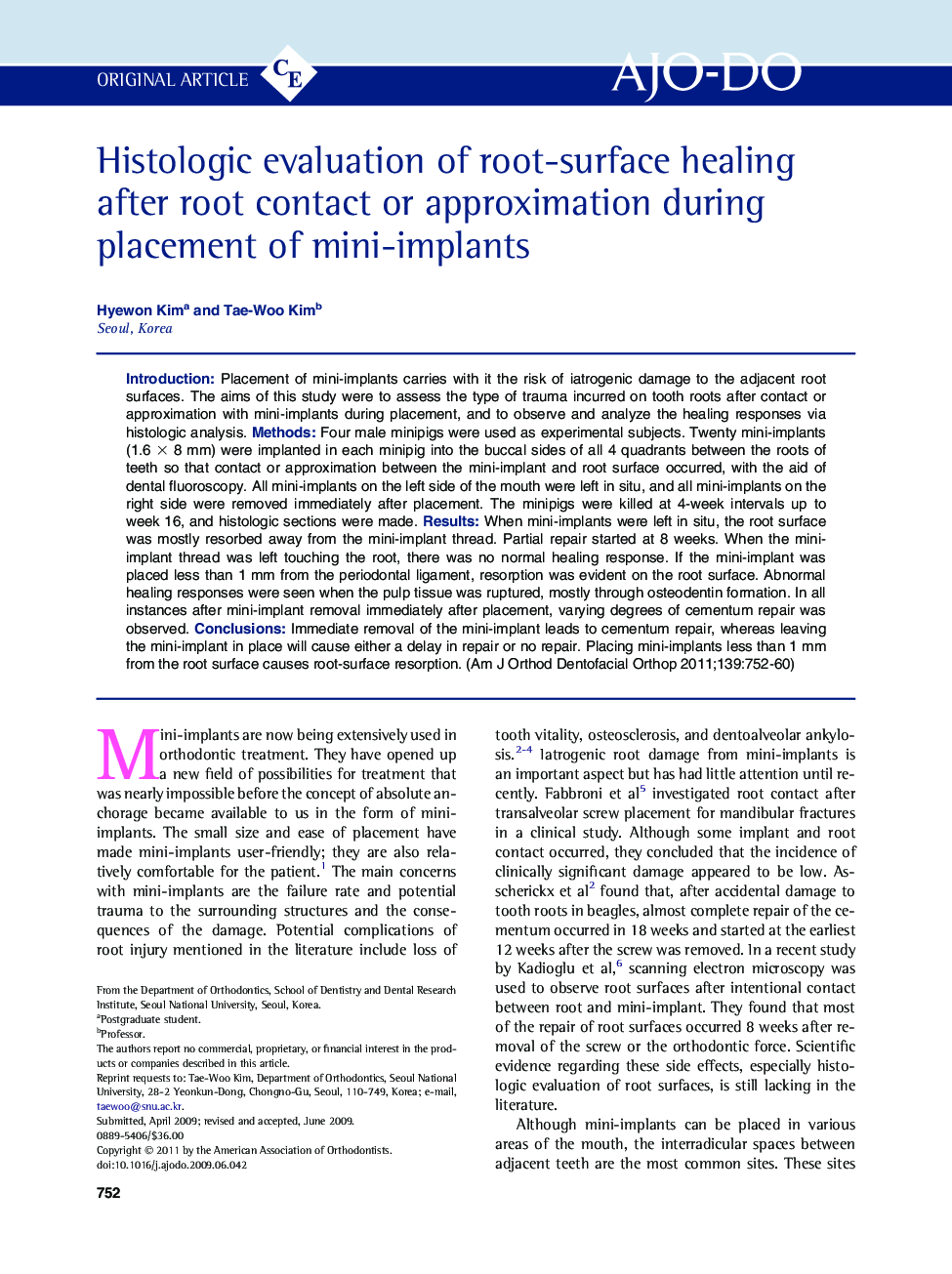| Article ID | Journal | Published Year | Pages | File Type |
|---|---|---|---|---|
| 3117246 | American Journal of Orthodontics and Dentofacial Orthopedics | 2011 | 9 Pages |
IntroductionPlacement of mini-implants carries with it the risk of iatrogenic damage to the adjacent root surfaces. The aims of this study were to assess the type of trauma incurred on tooth roots after contact or approximation with mini-implants during placement, and to observe and analyze the healing responses via histologic analysis.MethodsFour male minipigs were used as experimental subjects. Twenty mini-implants (1.6 × 8 mm) were implanted in each minipig into the buccal sides of all 4 quadrants between the roots of teeth so that contact or approximation between the mini-implant and root surface occurred, with the aid of dental fluoroscopy. All mini-implants on the left side of the mouth were left in situ, and all mini-implants on the right side were removed immediately after placement. The minipigs were killed at 4-week intervals up to week 16, and histologic sections were made.ResultsWhen mini-implants were left in situ, the root surface was mostly resorbed away from the mini-implant thread. Partial repair started at 8 weeks. When the mini-implant thread was left touching the root, there was no normal healing response. If the mini-implant was placed less than 1 mm from the periodontal ligament, resorption was evident on the root surface. Abnormal healing responses were seen when the pulp tissue was ruptured, mostly through osteodentin formation. In all instances after mini-implant removal immediately after placement, varying degrees of cementum repair was observed.ConclusionsImmediate removal of the mini-implant leads to cementum repair, whereas leaving the mini-implant in place will cause either a delay in repair or no repair. Placing mini-implants less than 1 mm from the root surface causes root-surface resorption.
